Onboarding improvements that cut our churn by nearly 300%
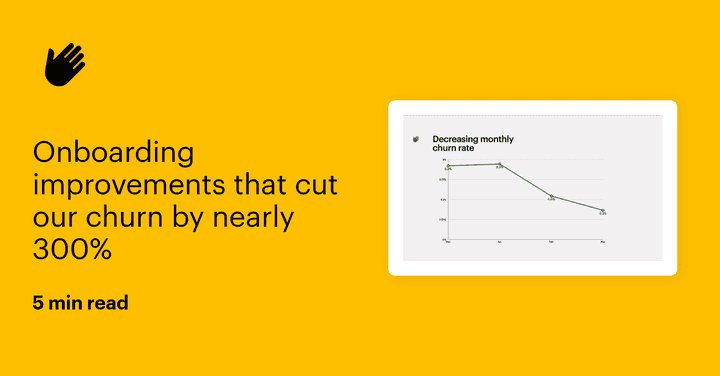
Whether you’re building your product at an early-stage startup, or even at a larger company where the product is finely tuned — there is a straightforward process that can help you improve your onboarding experience.
We decreased customer churn a Heyday from 8.5% to 3.3% just by changing our onboarding flow.
Here are the steps you can follow, with examples from our own onboarding experience.
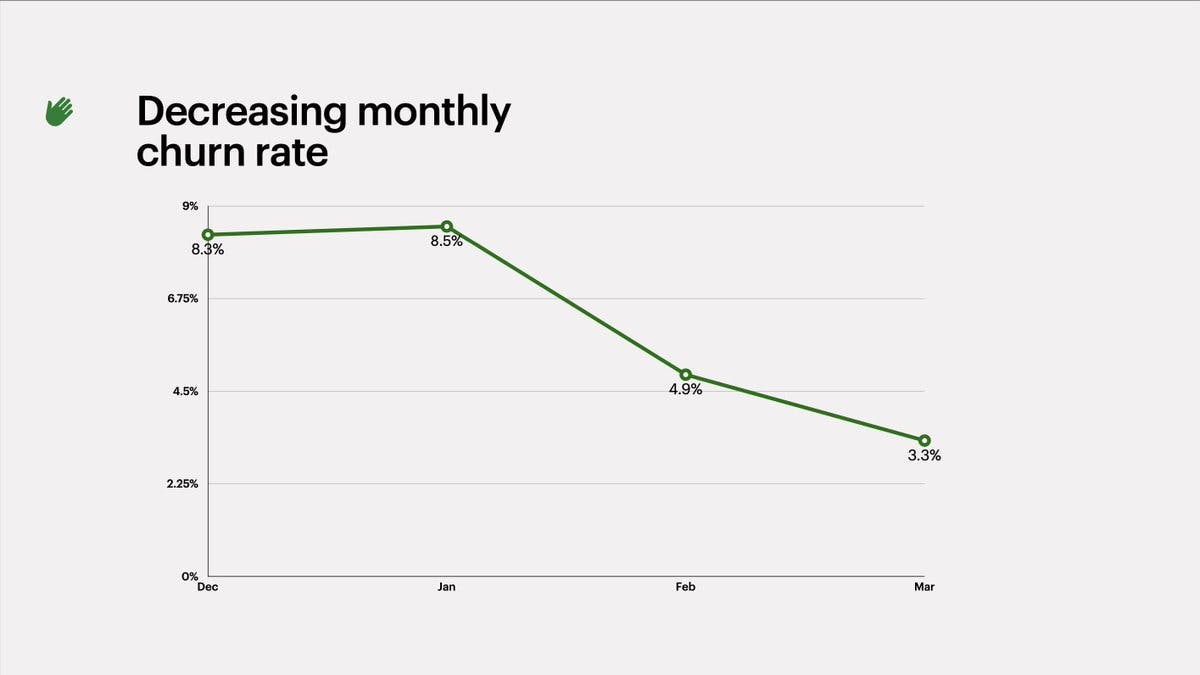
Let users try your product with no guidance
After a few months of onboarding every new user via Zoom, my co-founder Samiur Rahman and I removed ourselves from the process. We dumped users into Heyday with no demo, zero product onboarding, and one education email.
The result was a disaster. Engagement dropped and churn sky-rocketed.
When we surveyed users to learn why they stopped using our product, they would respond with something along the lines of, “I stopped using it because I didn’t see the benefit.”
Observe users to identify friction and aha! moments
Don’t wait to release your product. It is ready to be shipped when as soon as you can get feedback on it. Through observation, you’ll learn what users really need to experience the value of your product.
I re-inserted myself into our onboarding flow via a Zoom call. Rather than walk users through the product, this time I sat there silently and watched as they got started. I witnessed a lot of confusion, moderate frustration, and a few smiles.
After twenty or so observations, we identified the common roadblocks that got in the way of our users. We walked away with a list of goals for our future onboarding experience to accomplish.
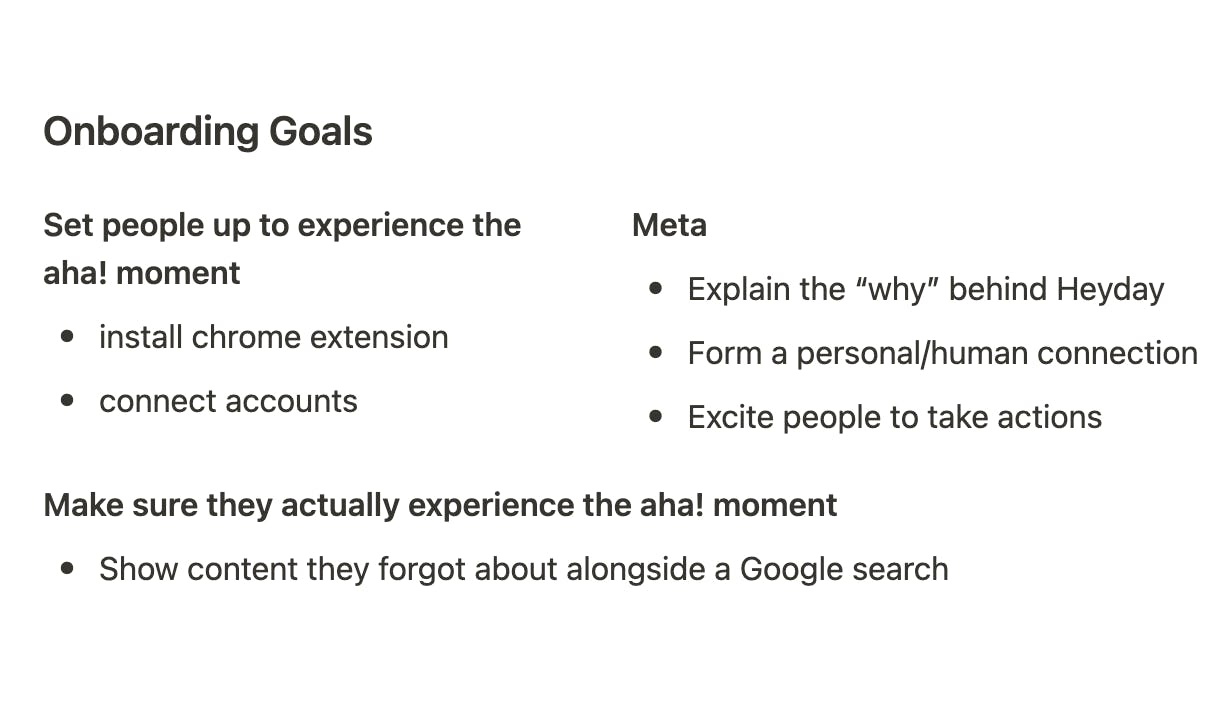
Pay attention to users’ emotions
You might think you know what your aha! moment is, but it’s hard to be sure until you see users’ eyes light up.
During observations, peopled cracked up when Heyday showed them content they forgot about alongside Google search results.
Given the strong emotional response, we knew this must be our aha! moment. We designed our onboarding to replicate the feeling at scale.
Explain the “why” behind your product and form a personal connection
One common question people want to answer when they sign up for a new product is, “is this worth my time?”
As the product owner, you can help them get to a “yes” by helping them to form a connection with the people who build your product and the vision that guides it. We include videos of our founders throughout our onboarding to accomplish this.
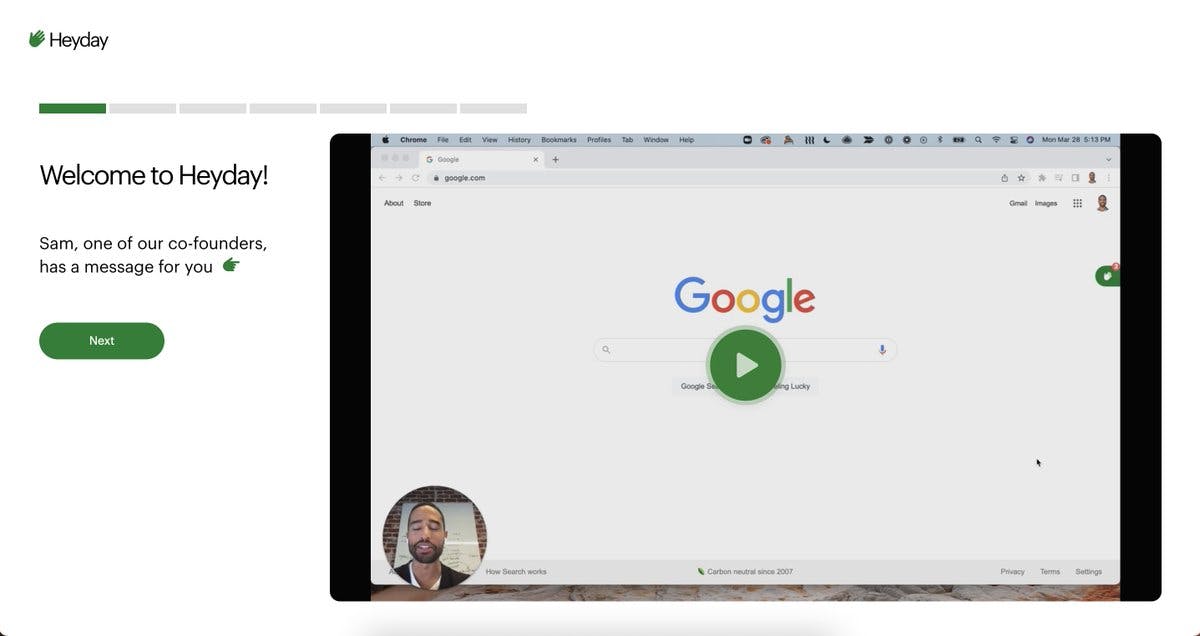
Excite people about taking action
Beyond forming an emotional connection, you can convince people to give your product a fair shot by demonstrating the value they’ll experience.
Be sure to show them how your product works and the benefits they’ll receive as quickly as you can. If you are building a consumer product, show it in action. If you’re building an enterprise solution, try an easy-to-understand diagram.
(We were inspired by Honey’s “how it works” screen.)
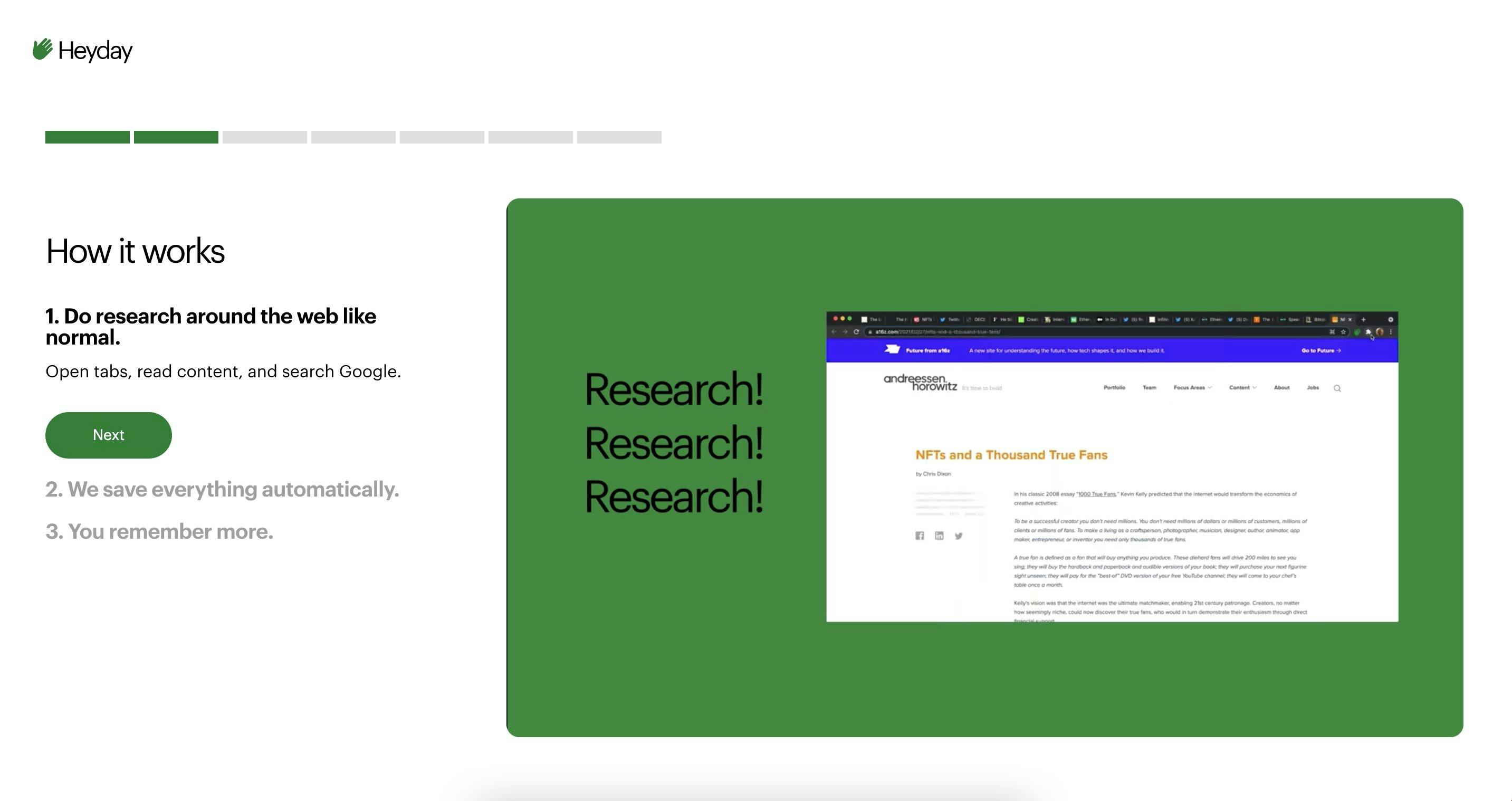
Present the key action
What single step must a user take to experience the core value of your product?
It’s impossible for Heyday users to experience the aha! moment if they don't install our extension, so we encourage them to do so with one of our first onboarding screens.

Consider what step a user must take to experience your product at its best, and do everything in your power to ensure they take it.
Make aha! moment more likely
Not all friction is bad. It’s worth adding the kind to your process that helps a user experience your aha! moment.
For example, the more content a user adds to Heyday, the more likely we can resurface something they forgot about. It might seem unreasonable to ask a user to connect an integration to our product before they’ve used it.
We’ve found that users who connect integrations to Heyday are almost three times more likely to become paying customers, and it doesn’t lead to a meaningful dropoff in conversions.
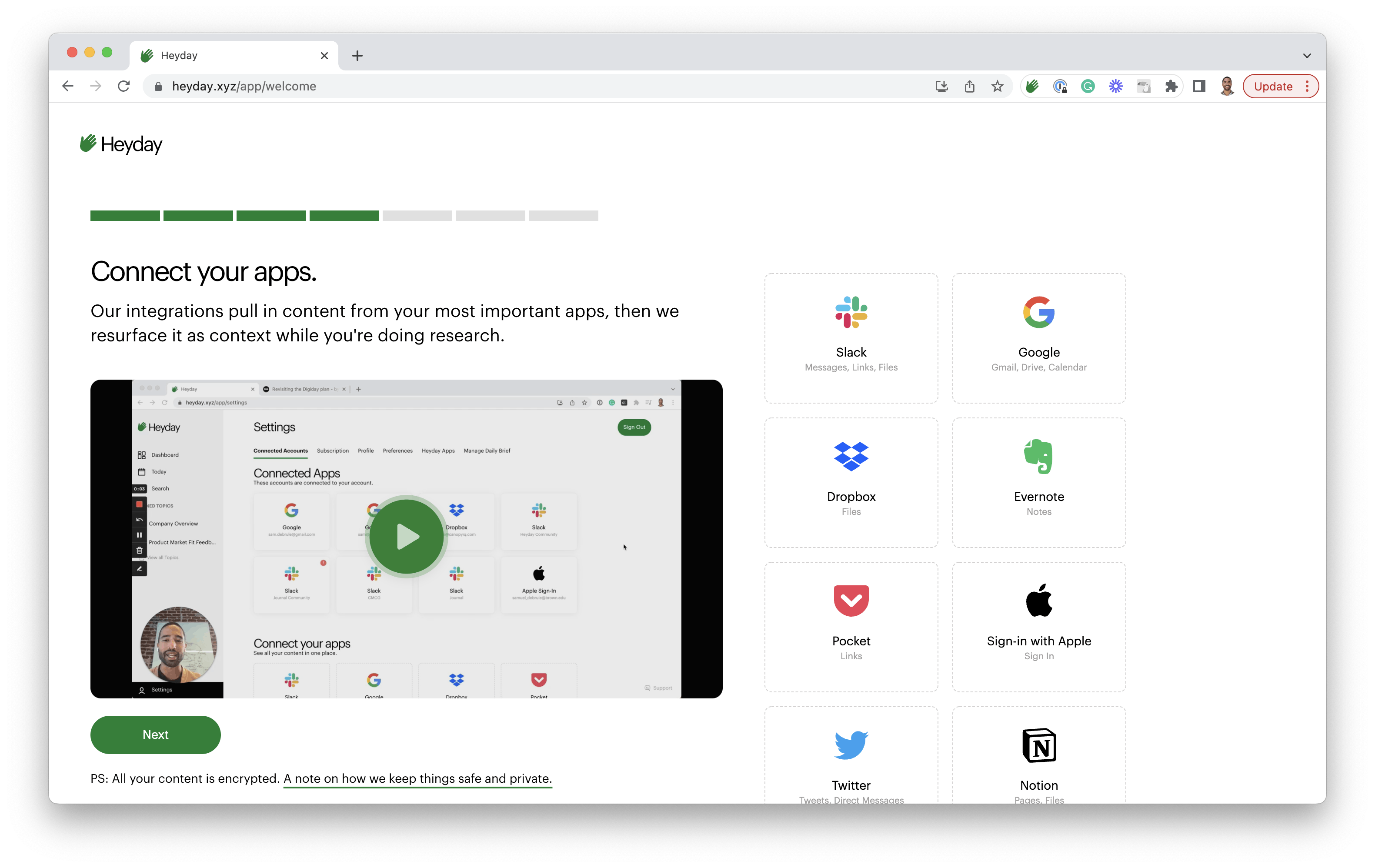
Answer common questions
A series of questions will bounce around in your users’ heads as they go through your onboarding. If you don’t answer them, people won’t stick around long enough to try your product.
During our observation sessions, one of the most common questions we were asked was, “how do I know my data is safe in Heyday?” We answer the question explicitly throughout onboarding so it doesn’t trip them up.
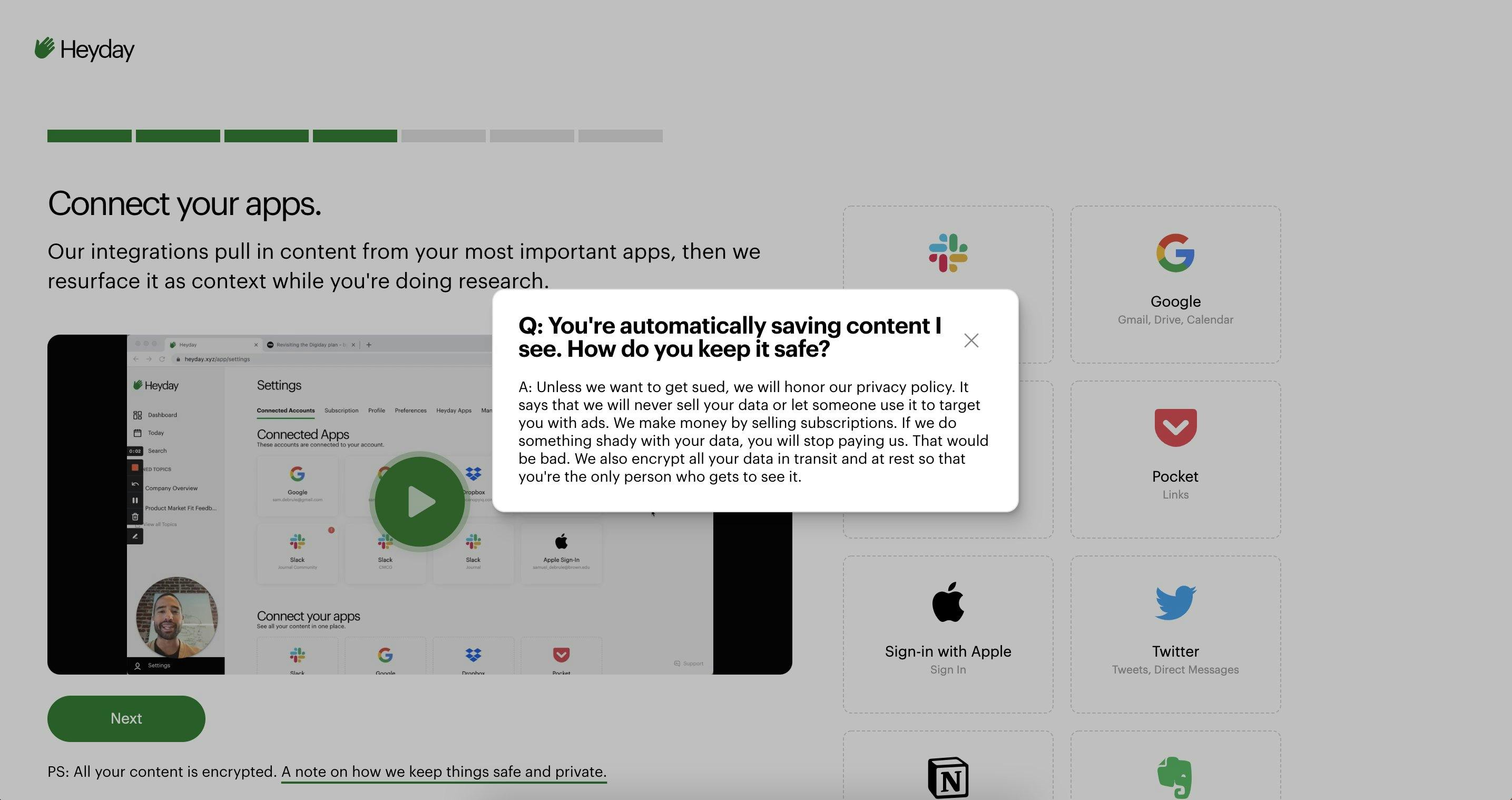
Set users up for positive future sessions
Onboarding is more than the first experience a user has with your product. Consider the subsequent sessions as someone gets familiar with your offering.
We do the following:
- Ask users to tell us topics they care about so that we resurface relevant content
- Send them an email the next morning with that content
- Create a "Getting Started" checklist to set them up for future success
And on top of that, we schedule calls with users to get them excited about future versions of the product and deepen our relationship.
Manufacture the aha! moment
As soon as you have the information you need to deliver your aha! moment, do it.
We pre-populate a google search for which we have a high probability of resurfacing forgotten content to deliver the moment that led to the emotional response during our onboarding sessions.
There’s no such thing as a perfect onboarding experience
But done right, the impact of good onboarding can be massive.
We included our nearly 3x reduction of churn from onboarding changes in our seed pitch deck, and it was one of the factors that helped us raise a round from top investors.
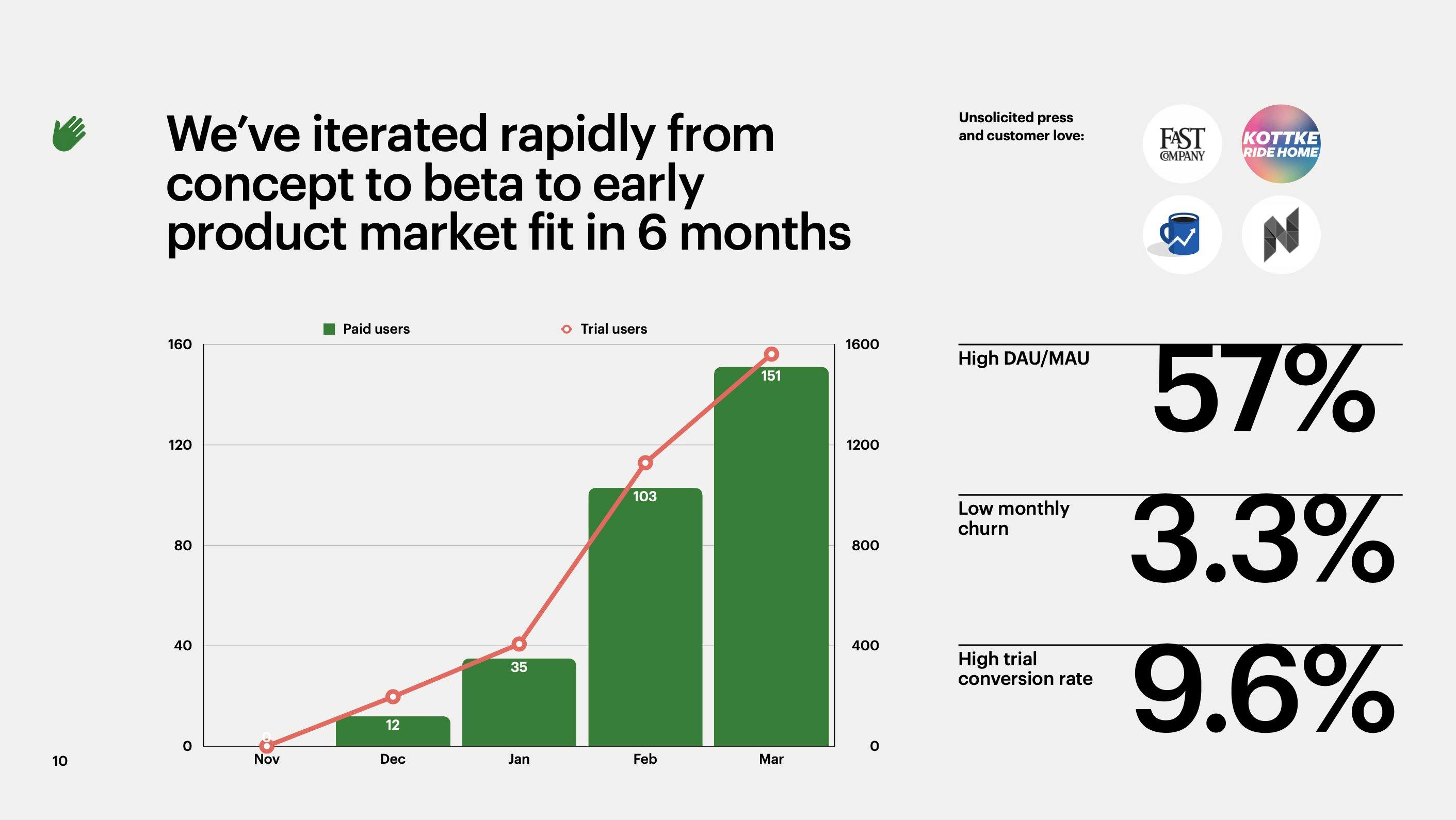
We try to share our key learnings publicly at Heyday so others can benefit. If you're working on onboarding and saw something you liked here, feel free to steal it. I hope this piece inspires you to start experimenting!
This post was originally published on TechCrunch
Doing research for your own onboarding improvements?
Heyday will save you time and help you retain more of what you learn.